Dryer Vent Warning Signs: What to Look For
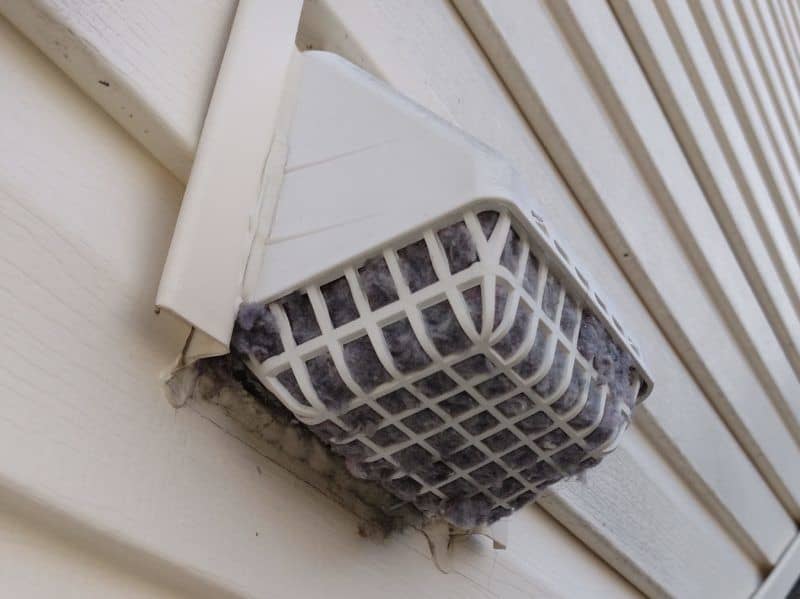
Signs That Your Dryer Vent Needs Service
Your dryer is getting too hot
If a dryer vent is clogged, less air is flowing through the duct and that means less air is flowing through the heater as well. This causes the heater to run hotter. It would then be hotter in the drum as well. Sometimes the sides or top of the dryer will feel warmer also.
Your dryer is not getting hot at all
As the heater gets hotter than the normal operating temperature, safety hi-limit thermostats are supposed to kill power to the heater. They turn power on and off, like a switch, based on the temperature they sense. If it gets really hot another safety thermostat called the thermal fuse will blow. This does not reset. These must be replaced. When these fuses blow, power to the heater is cutoff. When your dryer runs but the heat won’t come on, this is typically the reason.
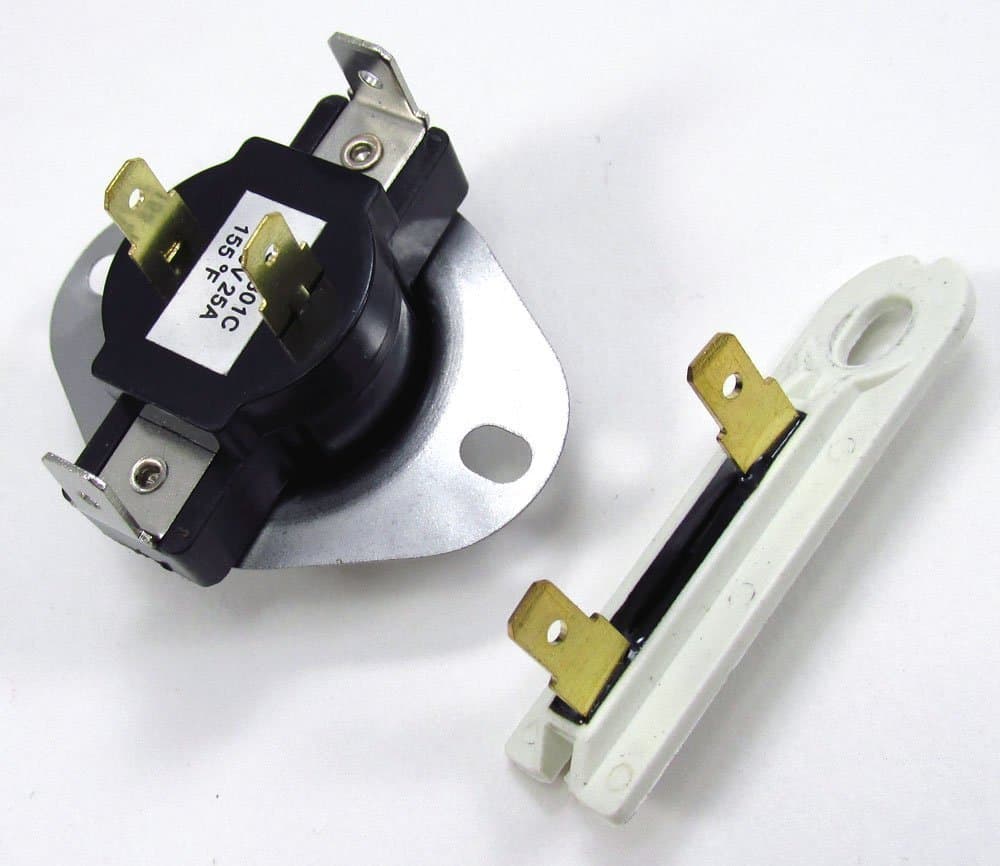
It is extremely humid inside the dryer
It is always humid in the dryer when wet clothes are in there, but it can get really steamy when the dryer vent is clogged badly. You will notice the difference when you see and feel it. It will be steamy and you will probably see a lot of condensation on the inside of the dryer door.
It is hot and humid in your laundry room
If it’s hot and humid in the laundry room, the transition duct (from the dryer to the wall) is probably disconnected or torn. This may be due to a clogged vent that resulted in increased pressure that caused the duct to pop apart. It could mean a few different things, but the bottom line is that it’s bad for the dryer exhaust to be entering the laundry room. This could cause mold problems and even cause a fire if excessive lint is accumulating behind the dryer.
There is water in the dryer vent
Water in the dryer vent is usually an indication of a completely clogged dryer vent, which is a very serious condition. The dryer’s job is very simply to evaporate water from wet clothes and blow it outside the home. If the duct is clogged the dryer may still be able to evaporate the water from the clothes, but it won’t blow it outside. That water is just blown into the duct, where it collects. Look for water dripping from the dryer vent, especially in a low spot. Water stains on ceilings, in the area of a dryer vent, are good indicators.
Rigid dryer vents are typically made of galvanized steel, which is resistant to rusting. However, even this material will rust through if subjected to moisture for long periods of time. If neglected, a clogged dryer vent can also have the effect of extra repair costs to replace rotted ducting.
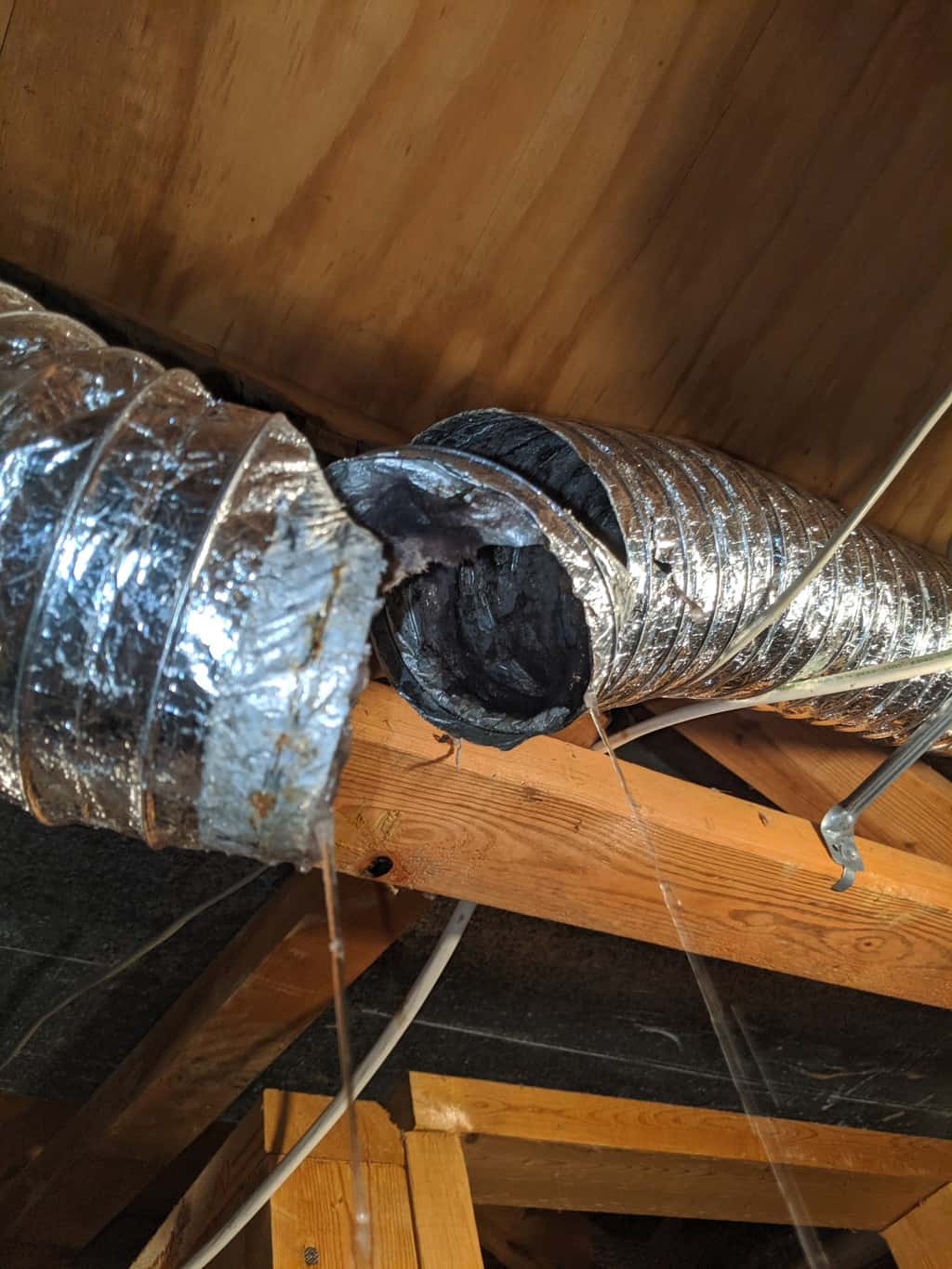
Your clothes are taking longer to dry
If your clothes are taking multiple timed cycles to get dry or are taking excessively long to dry on a sensor dry setting (longer than an hour or so is a pretty good thumb-rule), you need to have the dryer vent cleaned. Keep in mind that if you cram too many clothes into the dryer, they will always take longer to dry. You shouldn’t fill the dryer drum more than 3/4 of the way.
We recommend that after you have your dryer vent cleaned, you do a load for future reference. We believe the best way to do this is to time a load of a set number of towels on a sensor dry cycle. Write down the time, the temperature setting, number of towels, and the cycle settings for future reference. Also, record the washer cycle setting. Different washer settings will spin the clothes differently will have an effect on how dry the towels are before they go to the dryer. Every 6 months or so do a similar load with the same cycle and temperature settings and compare the time with your reference time. This isn’t an exact science, but it’s good enough for a comparison to see how the dryer is doing.
Your dryer's check vent or flow alarm is on
Many modern dryers have sensors installed that will alert you of a restriction in the dryer vent. These alarms typically won’t be activated until the duct is around 80% clogged. They are designed to prevent overheating of the dryer. Since these alarms don’t come on until the problem is getting pretty bad, they should be taken seriously. Different models have different lights and alarm codes. Some dryers even have a flow diagnostic that you can initiate. Check the owner’s manual and be familiar with your dryer’s alarms.
Excessive lint behind the dryer
Believe it or not, this is a very serious concern. Excessive lint behind the dryer is the single greatest indication that you are at risk for a fire. Dryers have air intake vents on the back. If there is lint leaking from the dryer vent, the dryer will essentially vacuum up some of this lint and it will accumulate inside the dryer where it could be ignited by the heating element. From what we have seen, this is one of the biggest contributors to dryer fires. If the vents on the back of the dryer are covered in lint, your dryer should be cleaned internally. See our Dryer Vent Cleaning Gallery for pictures of dryer internal lint buildup.
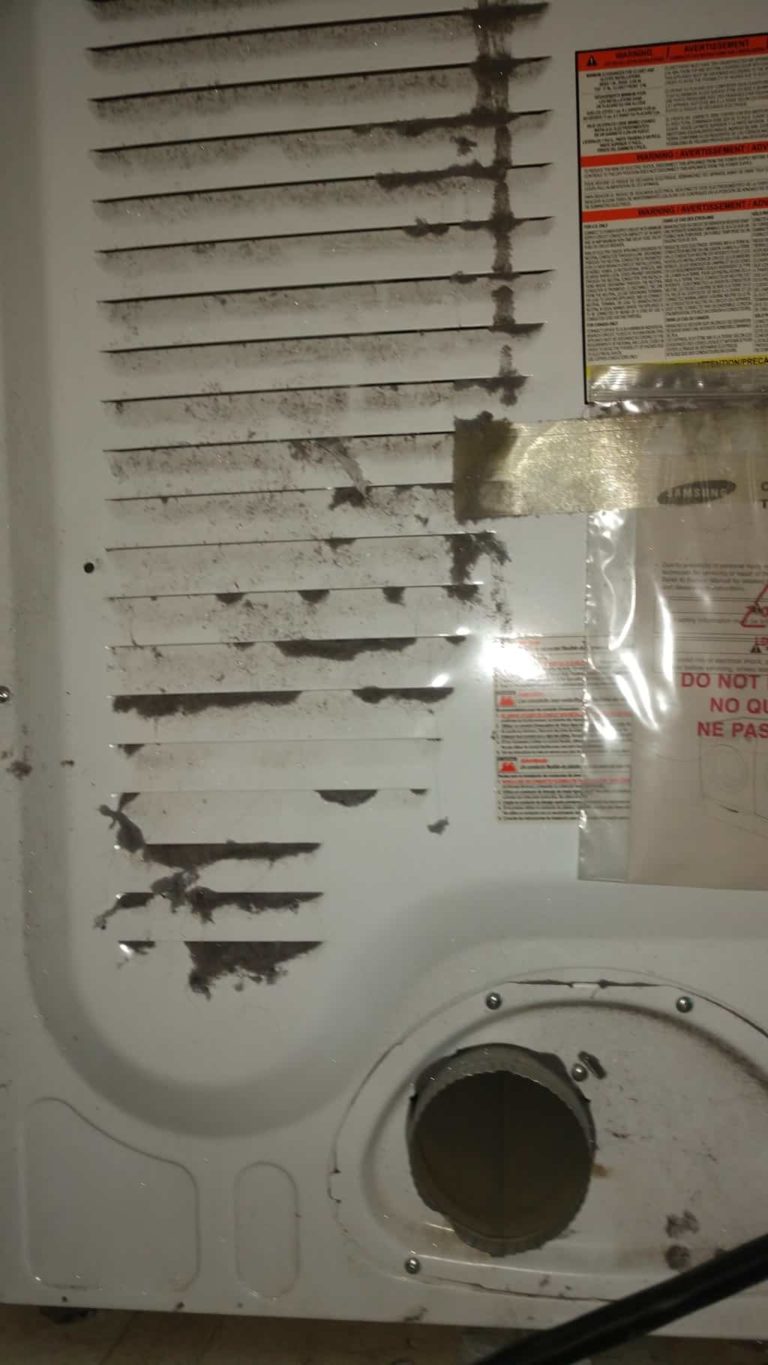
The vent flap isn't opening fully
If the dryer vent flap(s) isn’t opening, or is barely opening, while the dryer is running the duct is probably clogged or disconnected somewhere. Sometimes the flap(s) just get stuck from lint buildup on and around the flap itself.
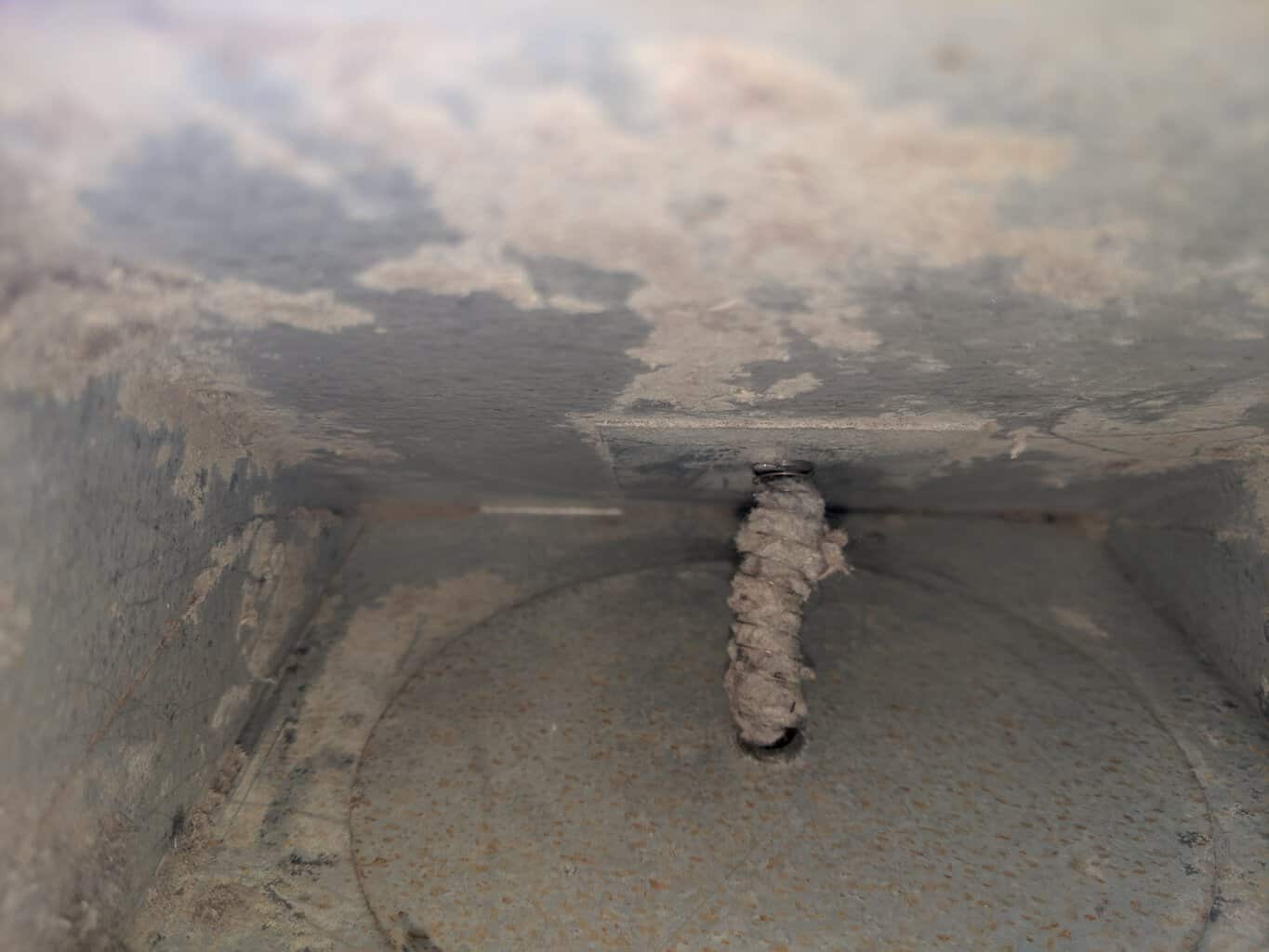
Clogged screens and bird guards
Many dryer vent covers are equipped with screens and bird guards. Most of these are poorly designed for dryer vents and will clog with lint in a short period of time. As these get packed with lint, your duct and dryer will backup with lint very quickly. The building codes prohibit the use of screens on dryer vent covers. It’s important to use a bird guard that is properly designed for dryer vents! We have special cages designed for use on dryer vents that won’t clog. For more information, check out our bird guard installation service.
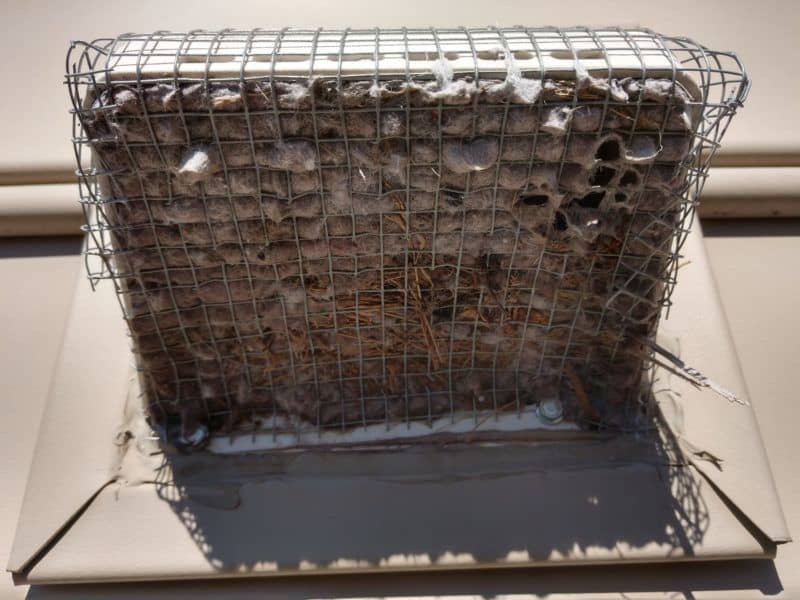
Birds nesting in your dryer vent
All of your home’s vents should be protected from birds nesting in them, particularly dryer vents. If you see nest material in and around the vent cover, birds flying in and out of the vent, or bird droppings on your siding below the vent cover you should address this right away. Many fires have been caused by bird nests in dryer vents, as they cause some of the worst clogs.
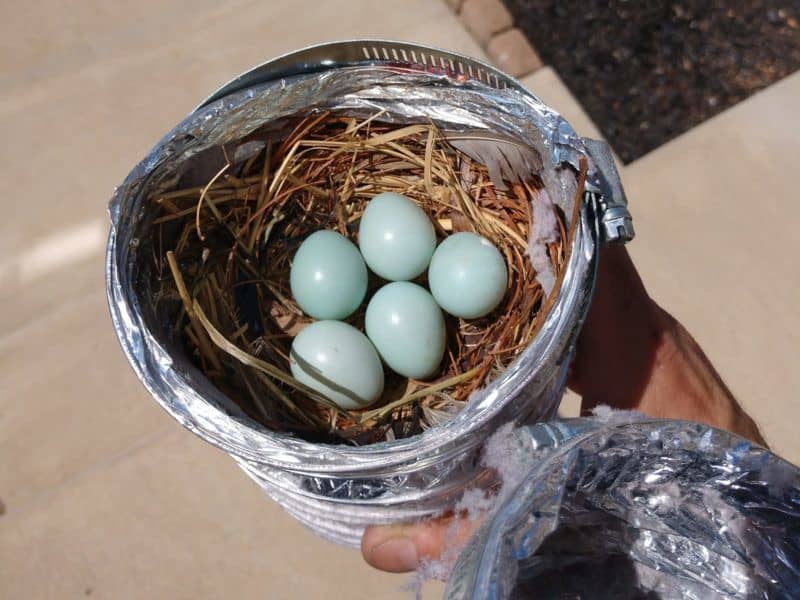
Check out our dryer vent cleaning service to learn more about how we can help resolve any of these issues.
Please share this article with your friends, family and neighbors so that they can identify dryer vent issues and get them resolved before they damage their dryer or have a fire in their home.
Thanks for taking the time to read this! We hope it helped you understand how to identify issues with your dryer vent.